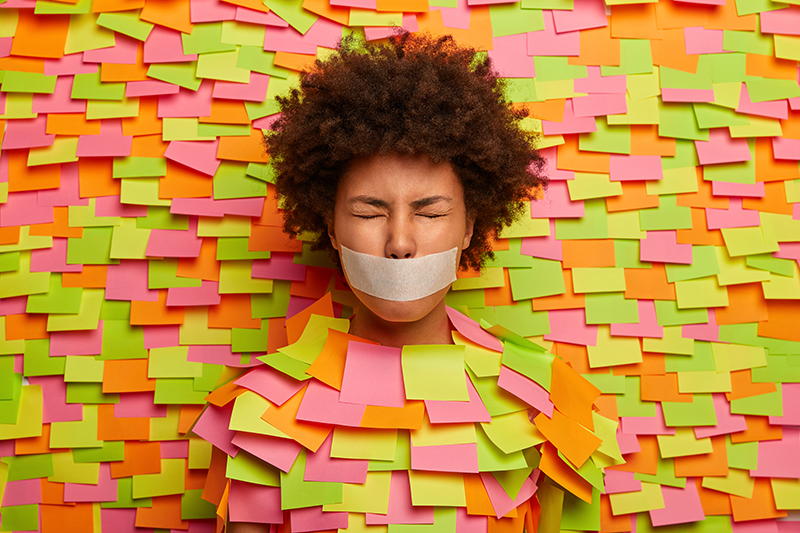Art Censorship
The censorship of art is nothing new. While we allow ourselves freedom of expression in most places, art censorship is still prevalent. Modern technology grants us access to upload, share and reshare images that we consider art. There are even exhibits whose primary goals are us uploading and sharing our take on art. However, this wasn’t always the case. Throughout history – art censorship has claimed the creative freedoms of many artists and their work.
Silencing and erasing art due to unacceptable content is the rallying cry of the ultra-moral. In some cases the motivations for censorship were religious. However, in others, they were social or political. Artists push boundaries through their imagery and content. The art world is a place for overstepping the bounds of “polite” society, and delving into controversial and taboo characteristics. Art regularly “butts” against standards of good taste in the fight for freedom of expression.
However, art censorship is spreading beyond traditional medians of media. Instagram and Facebook have taken to censorship on their platforms. The latter censoring artist Rupi Kaur’s “period photo,” claiming that it violated community guidelines. However, the same platform allows for a plethora of images found under the simple hashtag #girls. While Facebook did not appreciate a teacher attempting to share a photo of Gustave Courbet’s “L’Origine du Monde,”. Claiming in statements that “photos of paintings, sculptures and other art that depicts nude figures are [fine].”
Censored Throughout History

Initially deeming it unholy and immoral by many followers of the Catholic faith, Michelangelo’s Sistine Chapel was “unsightly” to many including Pope Daniele de Volterra. The scene depicts unclothed human souls who rise or fall to their otherworldly fates. So much so critics could hardly concentrate on the religious message through all the naked parts.
Integrating themselves with the progression of time, classical nudes are now apart of the language of art. Painted bodies like Michelangelo’s are not only accepted but revered. Lounging nudes are on display without complication in works by Titian and Giorgione. However, Manet’s red-headed nude was seen as “vulgar“. Her unwavering gaze and realistic representation, adding heat to a raging fire.
Manet chose to capture nudity not as otherworldly or heavenly. He paints the body in its reality. Bringing in policemen to protect the canvas from furious patrons – the piece was received happily during the 1865 Paris exhibition.
One year later, Courbet’s depiction of the world’s origin, increases the stakes. Commissioned by Turkish diplomat and collector Khalil-Bey, the work rose to almost mythical status. Consequently, the piece showed mainly behind closed curtains.
The piece didn’t show publicly until 1995. Its whereabouts between 1866 and the late 20th century remain shrouded in mystery. The piece is still too salacious for Facebook. The site censoring the work in 2011.
Dipping a crucifix into a cup of his own urine in 1987, photographer Serrano, sealed his infamy with his piece aptly titled “Piss Christ.” Initially showing in New York to a positive reaction. However, two years later at its North Carolina showing, things took a turn. Local Senator Jesse Helms publicly expressed his outrage. Stating that the work “dishonor[ed] the Lord.” Consequently, Serrano lost his grants. “Piss Christ,” to this day, remains as controversial.
Censorship today

As Edgar Allen Poe says “There is no beauty without some strangeness”. We could argue there is no beauty without some vulgarity. The world around us is 24/7 mania each part of it being broadcast into our homes. Why shouldn’t art reflect that – and if that is not censored in our nightly news, then why censor it in our museums – or in the media?
Adda Þóreyjardóttir Smáradóttir must have asked the same question when she started the #freethenipple hashtag. Going viral on social networks everywhere the then 17-year-old student chair of the Feminist society at the Commercial College of Iceland, declared Thursday “Free The Nipple Day” at school. A classmate noting – she’d be letting herself in for trouble, as she posted a topless selfie of herself.
Inequality of human bodies aside – the censorship of art is reckless. Art is the great unifier able to connect us even if the subject is taboo. Taboo subjects make their way to the general public regardless of their oppressors. They are seen in all their scandalous, salacious glory. Allowing us the opportunity to see the world beyond the scope of our own sometimes narrow view.